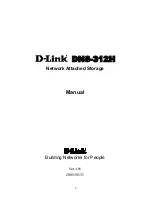
As
part
of
the
order
process,
VPD
collected
from
the
installed
server
is
combined
with
information
from
the
order
records
for
CUoD
activation
features.
This
combined
information
is
used
to
generate
a
CUoD
activation
code
specifically
for
your
server,
enabling
the
activation
of
the
desired
features.
Allow
some
time
for
the
order
processing
and
posting
of
the
processor
on
demand
activation
code
to
take
place.
Then
use
the
code
to
activate
the
processor
on
demand
features
directly
on
your
server.
If
you
need
to
activate
resources
immediately,
you
can
activate
features
using
the
Trial
Capacity
on
Demand
function.
This
allows
you
to
use
the
resouces
immediately
while
the
permanent
activation
code
is
being
processed.
Capacity
on
demand
activation
features
will
not
be
fulfilled
until
you
submit
the
VPD
through
the
Electronic
Service
Agent
or
manually
to
the
following
Web
site:
http://www.ibm.com/servers/eserver/pseries/cuod/index.html
When
you
enter
a
CUoD
activation
code,
standby
processors
or
memory
will
immediately
become
activated
for
use.
If
your
operating
system
is
enabled
for
dynamic
LPAR
operations,
the
resource
status
changes
from
standby
to
active.
The
resources
then
can
be
dynamically
moved
to
the
partition
where
they
are
needed.
Electronic
Service
Agent
and
Capacity
Upgrade
on
Demand
When
Electronic
Service
Agent
is
used
to
electronically
report
VPD
on
a
regular
basis,
you
can
eliminate
potential
delays
in
the
order
process
for
CUoD
activation
features
(no
manual
reporting
of
VPD
is
necessary
prior
to
the
fulfillment
of
a
feature
upgrade
order).
To
best
utilize
Electronic
Service
Agent
and
to
be
prepared
to
activate
CUoD
features
conveniently,
make
sure
that
Electronic
Service
Agent
and
related
communications
equipment
are
up
and
running.
If
this
is
done
before
the
CUoD
activation
features
are
ordered,
the
VPD
for
the
system
will
already
be
up
to
date,
and
the
manual
process
of
updating
the
VPD
is
not
needed.
After
Electronic
Service
Agent
is
installed,
follow
the
procedures
under
“Activating
Process
for
Capacity
Upgrade
on
Demand
Features”
on
page
121
to
enable
the
system
to
collect
and
transfer
the
required
VPD
for
CUoD.
If
a
CUoD
activation
feature
is
ordered
and
then
canceled,
an
action
by
the
service
representative
is
required
to
cancel
the
order.
After
the
activation
code
is
posted
on
the
Web
or
mailed,
the
order
for
CUoD
activation
features
is
considered
fulfilled,
and
the
billing
process
is
started.
Dynamic
Processor
Sparing
In
environments
with
CUoD,
dynamic
processor
sparing
allows
inactive
processors
to
act
as
dynamic
spares
.
An
inactive
processor
is
activated
if
a
failing
processor
reaches
a
predetermined
error
threshold,
thus
helping
to
maintain
performance
and
improve
system
availability.
Starting
with
AIX
5.2,
this
capability
is
offered
on
pSeries
servers
with
CUoD
to
help
minimize
the
impact
to
server
performance
caused
by
a
failed
processor.
This
will
happen
dynamically
and
automatically
when
using
dynamic
logical
partitioning
(DLPAR)
and
the
failing
processor
is
detected
prior
to
failure.
If
not
detected
prior
to
failure
or
not
using
DLPAR,
a
reboot
of
the
system
activates
an
alternate
processor
from
the
inactive
spares.
The
user
can
then
re-establish
required
performance
levels
without
waiting
for
parts
to
arrive
on-site.
Dynamic
processor
sparing
does
not
require
the
purchase
of
an
activation
code;
it
requires
only
that
the
system
have
inactive
CUoD
processors
available.
Software
Licenses
and
Processor
on
Demand
Activating
a
processor
may
change
the
terms
and
conditions
for
applications
that
you
use
on
your
server.
Consult
the
application
documentation
to
determine
if
the
license
terms
and
conditions
requirements
change
based
on
hardware
configuration.
120
Eserver
pSeries
650
Installation
Guide
Summary of Contents for pSeries 650
Page 1: ...pSeries 650 Installation Guide SA38 0610 03 ERserver...
Page 2: ......
Page 3: ...pSeries 650 Installation Guide SA38 0610 03 ERserver...
Page 8: ...vi Eserver pSeries 650 Installation Guide...
Page 12: ...x Eserver pSeries 650 Installation Guide...
Page 14: ...xii Eserver pSeries 650 Installation Guide...
Page 22: ...6 Eserver pSeries 650 Installation Guide...
Page 138: ...122 Eserver pSeries 650 Installation Guide...
Page 142: ...126 Eserver pSeries 650 Installation Guide...
Page 150: ...134 Eserver pSeries 650 Installation Guide...
Page 152: ...136 Eserver pSeries 650 Installation Guide...
Page 164: ...148 Eserver pSeries 650 Installation Guide...
Page 170: ...154 Eserver pSeries 650 Installation Guide...
Page 182: ...166 Eserver pSeries 650 Installation Guide...
Page 186: ...170 Eserver pSeries 650 Installation Guide...
Page 189: ......
Page 190: ...Part Number 80P3834 Printed in USA November 2003 SA38 0610 03 1P P N 80P3834...
















































